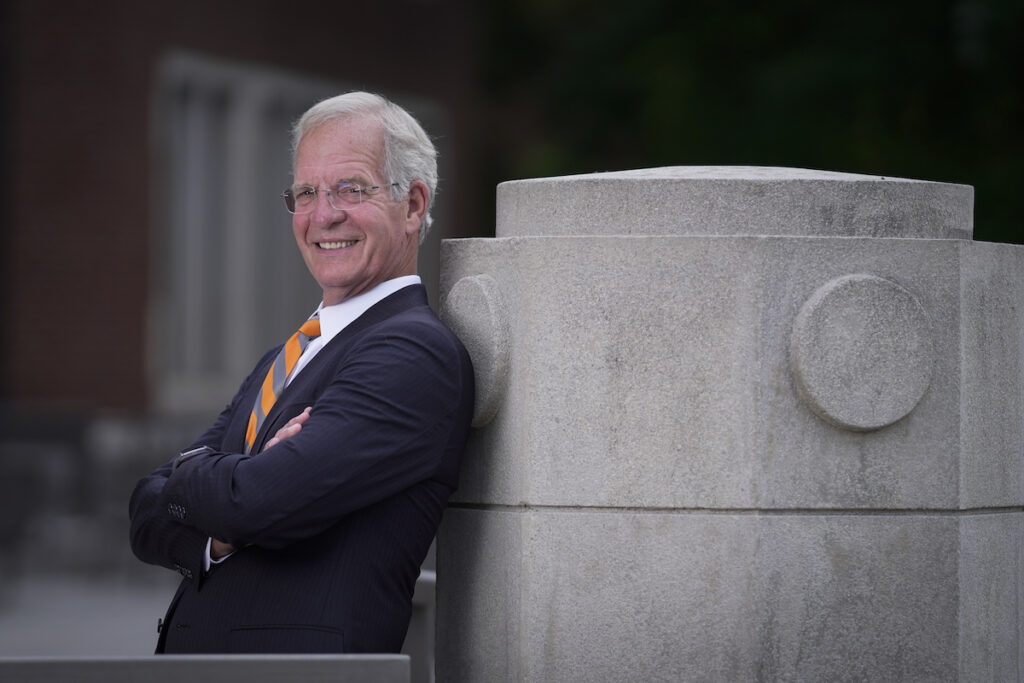As I approach retirement after nearly three decades at UT Law, I have been thinking about what I learned and what has meant the most to me. The law school has been a very special place for a long time. Our strong sense of community, our shared mission to educate future lawyers effectively and comprehensively, and our commitment to serve and improve our profession and community sets us apart. But how and why? How has the law school managed to preserve those attributes for so long?
For me the answer is that the law school enjoys a special culture of leadership. But not leadership vested in a single leader or series of leaders. Instead, a culture of leadership that is a process, not a position. A leadership process in which all the faculty are fully engaged. And, most important, a culture grounded in a special kind of leadership – servant-leadership.
The concept of servant-leadership has been around for a long time, but it received renewed attention through an essay by Robert Greenleaf published in 1970 [1]. According to Greenleaf, a servant-leader focuses primarily on the growth and well-being of people and the communities to which they belong. The servant-leader shares power, puts the needs of others first, and helps people develop, perform, and achieve their potential. Servant-leaders, as reflected in the word order, are servants first and leaders second. Their service is how they lead.
When I think of my colleagues over the years – people like Dick Wirtz, Jerry Black, Carol Parker, and Tom Galligan – I recognize several shared characteristics.
First, they cared and displayed a kindness and concern for their colleagues, students, staff, and clients. Each of them truly valued all members of the law school community.
Second, each of them promoted the law school and others, not themselves. Each of them had egos to be sure, but their egos did not get in the way of their leadership. Their egos were channeled into institutional achievement and accomplishment and recognition of the achievement and accomplishments of others.
Third, each of them was trusted fully. They were, in their own individual way, authentic and dependable. They had everyone’s back and everyone knew that they did.
Fourth, they were rarely certain and readily shared their uncertainty. So, they willingly listened and truly wanted to learn from others. Their approach helped them better understand what was needed and how to achieve it.
But most important, their primary goal was to make the law school the very best it could be. That goal and the tone it set – shared by so many of their faculty colleagues, staff, and even students – helped create and maintain a culture of servant-leadership. They helped create an environment of mutual acceptance and respect. I have been blessed to be part of it.
Yet, change is in the air. Several senior faculty and staff are retiring. Personally, I am excited to see how the next chapter of my life reads. I look forward to handing off the baton and heading for the mountains.
But most of all, I am excited about the future of the institution that means so much to me. All of the changes provide new challenges and fresh opportunities. I am confident the faculty will meet the challenges effectively and take full advantage of the opportunities. As I look around at my colleagues, I know the shared culture of servant-leadership will continue. The future is very bright. And it will be fun to watch.
[1] Robert K. Greenleaf, The Servant as Leader (1970).
This first appeared as a submission for Leading as Lawyers, a digital publication produced by the University of Tennessee College of Law’s Institute for Professional Leadership.
